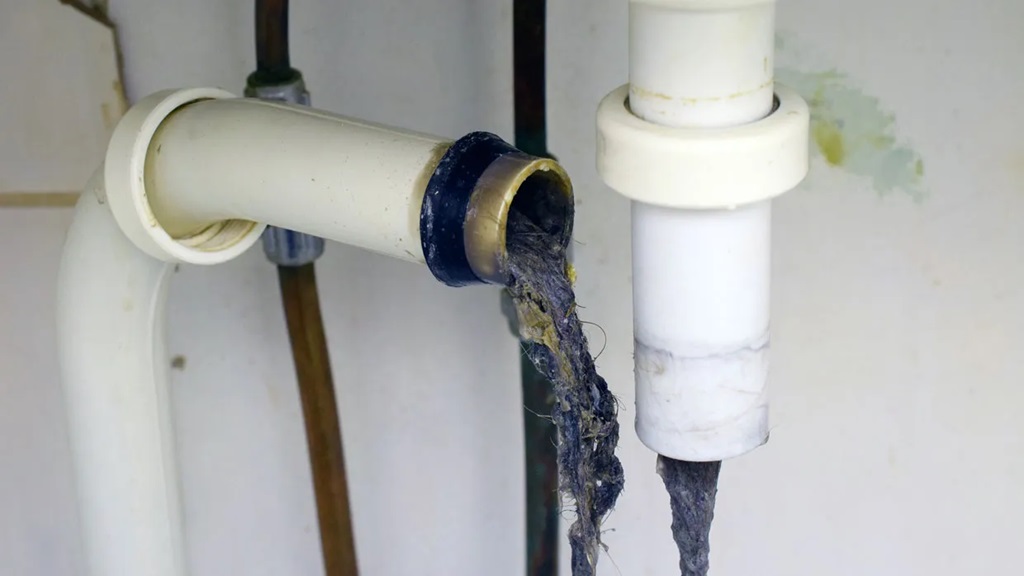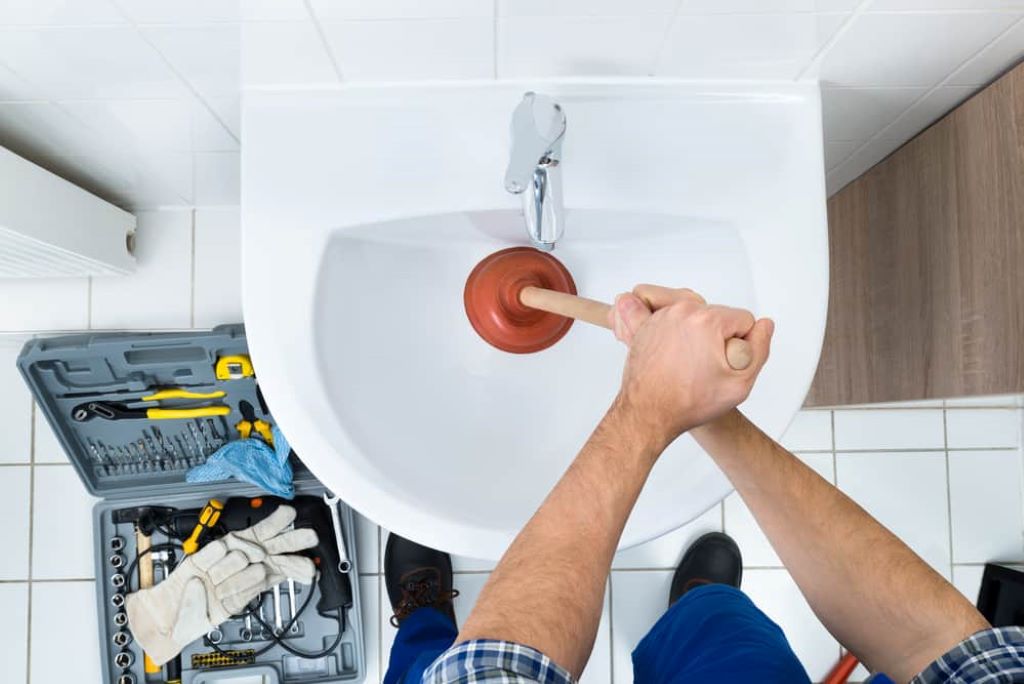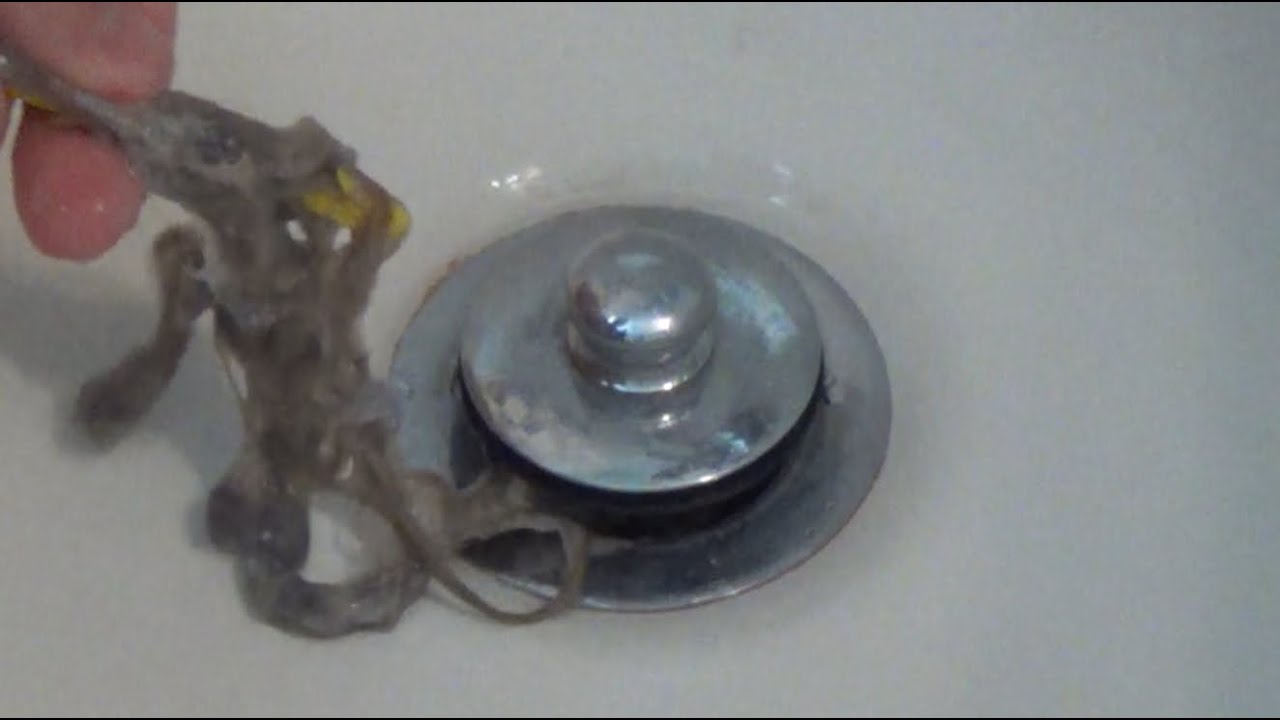We’ve all experienced it – when you turn on the water in your bathroom sink, the water doesn’t go down the drain quickly and instead, it stays in the sink. It’s not a pleasant experience, but it can happen even if you keep your bathroom clean. Don’t worry. You don’t need to use any chemicals or call a plumber to fix it. This guide will show you some easy ways to clear the clog and make your sink work properly again. By the end of this guide- how to clean bathroom sink drain, your bathroom sink will be clean and working perfectly. Let’s get started!
Method 1: Baking Soda and Vinegar
Chances are you already have the magical clog-busting duo of baking soda and vinegar in your kitchen. These two ingredients work together to break up gunk, grime, and buildup in your drain. The best part? No nasty fumes or chemicals to hurt your pipes.
What You’ll Need:
- 1/2 cup baking soda
- 1 cup white vinegar
- A funnel (optional)
- A kettle or pot of boiling water

Here’s How:
First, pour the baking soda down the drain. Be sure to coat the sides of the pipe, not just the standing water in the sink. I prefer to use a funnel to really make sure it all gets down there, but you can pour slowly and carefully without one too.
Next, pour the vinegar down on top of the baking soda. Get ready for a fizzy science experiment! The combo will immediately start bubbling and fizzing as a chemical reaction occurs. This helps break up and dissolve gunk along the sides of your pipes.
After 2-3 minutes, pour the boiling water down the drain. This flushes everything further down the pipes. If your drain isn’t moving much yet, let it sit for 15-30 minutes before flushing with more boiling water.
I like to repeat the whole process 2-3 times for really stubborn clogs. Just let the drain rest for a few minutes in between treatments.
The Pros:
- Super cheap ingredients you probably already have
- Non-toxic and won’t hurt pipes
- Can be repeated as often as needed
The Cons:
- Takes longer than harsh chemical cleaners
- May need multiple treatments if clog is further down the pipes
- Vinegar smell lingers briefly
But I’ll take a little vinegar smell over toxic fumes any day! Overall, it’s a safe method that breaks up gunk without damaging pipes.
Method 2: A Plunger
Don’t knock the lowly plunger until you try it! A simple sink plunger can work wonders on mildly clogged drains. The suction actually pulls up gunk, hair, and grime stuck to your pipes, sending it down to the main line.
Be sure to get a plunger sized specifically for sinks – it will have a thinner rim able to fit fully over the drain opening.
What You’ll Need:
- Sink plunger
Here’s How: First, remove the sink stopper if you have one installed. You want direct access to the drain. Fill the sink with a few inches of water.
Press the plunger firmly over the drain opening to form a seal. Gently plunge up and down 5-10 times to dislodge clogs.
Check to see if the water drains any better. Still slow? Repeat the suctioning process, re-sealing the plunger over the drain each time.
Finish by running very hot water down the drain to flush debris after plunging.
The Pros:
- Simple, fast, and inexpensive
- No chemicals needed
The Cons:
- Won’t work if clog is deep in the pipe
- Can splash dirty water out of the sink
- Takes some muscle work plunged repeatedly
While a plunger isn’t a surefire fix, it’s worth trying, especially if you don’t have any other supplies on hand. A few good plunges can dislodge surprising gunk that may be lingering right inside your drain.
Method 3: A Wire Hanger or Zip-It Tool
Maybe drain snakes seem intimidating. Or you don’t have one. No worries – you can actually clear a lot of clogs using a simple wire hanger!
The end of the hanger is shaped perfectly to hook and pull up debris. Drain cleaner gels and powders also come with tiny plastic zip-it style tools that work well too.
What You’ll Need:
- Wire hanger or zip-it tool
- Dish soap
- Hot water
Here’s How:
Straighten out the end of your wire hanger if it’s not already. You want at least 12-18 inches straight to reach into pipes.
Squirt some dish soap into the drain and be sure it drips down the opening. This lubes up the sides of the pipe.
Carefully insert your wire hanger or zip-it into the drain opening. Go slowly to feel if you hit a clog. If you feel resistance, that’s your clog!
Use an in and out motion to hook and capture the clog. Pull up gradually to bring gunk up the pipe. Remove periodically to see what nastiness you extract!
Keep snaking at any clogs until the hanger moves freely for 6 inches or more down the pipe. The deeper you can reach the better.
Finish up by running very hot water to flush any remaining loose debris after you remove the hook. Hurray!
The Pros:
- Simple tools you probably have already
- Lets you get deep into the pipe
- Cheap/free
The Cons:
- Won’t grab toilet paper or fabrics clogging your drain
- Can scratch enamel sinks if you wiggle too aggressively
Overall, this method works wonders for clearing globs of hair, soap scum rings, grease, and food that often clog drains. Just be very gentle with enamel sinks to avoid scratches.
Method 4: Electric Drain Auger
Sometimes you need a little mechanical muscle to bust up an epic clog. Enter the electric drain auger, also called a drain snake. These handheld cords harbor springs on the end that grab and rip through blockages.
They aren’t too expensive to purchase or even rent for occasional use. A power auger is a handy addition to your clog-fighting arsenal.
What You’ll Need:
- Electric drain auger/snake
Here’s How: Always double check that the sink is thoroughly plugged to avoid splashing dirty water out. I plug with a wet rag first for extra protection.
Feed the rotating end of the auger down into your drain opening slowly. Rotating springs will work their way through the clog, pulling out gunk wrapped around them.
Once the auger hits resistance, work it back and forth steadily in short strokes to grind through the clog. Don’t force it too hard against blockages.
Slowly extract the snake out, pulling out debris wrapped around the drill end. Yes, this part is gross but also oddly satisfying!
Run hot water between attempts to help flush away grime and lubricate the pipe. Repeat drillings with the auger until you can feed 6 inches more freely down the opening.
Finish up by running very hot water for a few minutes to help wash away any remaining loose debris. And just like that your drain is open again!
The Pros:
- Powerful mechanical snake busts robust clogs
- Reaches deep into pipes
The Cons:
- Potential to scratch enamel or metal pipes
- Can splatter dirty water if not fully plugged
- Need to own or rent
While it takes some equipment, a drain auger is the ultimate weapon against years of buildup or truly monster clogs. Just be very cautious of potential pipe damage with enamel sinks.
Method 5: Cleaning with a Shop-Vac
Have you thought about vacuuming your drain? A wet/dry shop vacuum uses suction to literally Hoover all that nasty slime right out of your pipes.
It pulls up years of built-up gunk lining your pipes to restore full water flow. The process is oddly satisfying too!
What You’ll Need:
- Wet/dry shop vacuum
- Vacuum hose attachment that fits drain pipe
Here’s How:
Start by covering the overflow drain holes with duct tape or a large wet rag. You want full suction down the main opening.
Dry fit your vacuum hose into the drain opening. It should slide down a few inches and fully block air from escaping.
Turn the vacuum on and slide the hose down into the drain pipe. Work it up and down steadily to pull up debris and dirty water.
Check the vacuum canister periodically so it doesn’t overfill. Empty the waste and double check for small items that may have suctioned up before continuing.
Repeat the process until the vacuum hose slides easily 6 inches or more down into the opening.
Finish up by running very hot water down the drain for a few minutes to flush any leftover gunk. Remove the overflow drain covers. Success!
The Pros:
- Thorough way to fully clean pipe walls
- Satisfying to see just how gunky your pipes were!
The Cons:
- Need access to a wet/dry shop vacuum
- Potential to suck up small items if not careful
- Can be messy emptying vacuum canister
While you do need some equipment, vacuum power is amazing at clearing all sorts of grime from your pipes. No chemicals needed either.
The Goo Be Gone Gel Method
What about trying a commercial drain cleaner gel? These thicker formulas coat pipes longer to really work at dissolving icky blockages. Just be sure to get a septic safe one to avoid pipe corrosion.
Goo Be Gone makes an excellent clog-removing gel perfect for bathroom sink drains.
What You’ll Need:
- Goo Be Gone Clog Remover gel
- Gloves
- Hot water
Here’s How:
Start by putting on some protective gloves – this stuff can irritate skin. Remove any sink drain stopper.
Squirt a generous helping of gel down the drain opening. Really coat the insides.
Let it sit and work at dissolving gunk for 15-30 minutes. Using hot water helps intensify the cleaner.
After it sits, run very hot water down the drain for a few minutes to flush everything down the pipes.
Didn’t work fully? Reapply for another round. The thick gel clings to pipes longer than thin liquid cleaners.
The Pros:
- Strong formula dissolves lots of gunk
- Gel formula clings insides of pipes
- Designed not to damage septic pipes
The Cons:
- Can take several applications
- More pricey than homemade mix
- Needs multiple flushes with hot water
Commercial gels are very convenient by coming pre-made. The thicker formula coats your pipes more thoroughly than thin liquids too. Just watch your skin since chemical cleaners can irritate.

Preventing Future Clogs
Well there you have it – five different methods to attack that pesky clogged bathroom sink drain!
With regular light cleaning, you can prevent tons of future clogs in the first place. Here are my top tips:
Add a drain cover catch: Install mesh or cup drain covers to catch hair and gunk before it ever even goes down your drain.
Pour hot water weekly: Make it a habit to pour very hot water down bathroom and kitchen sinks weekly to flush grime.
Alternate vinegar/baking soda treatments monthly: Keep your drains fresh by using these inexpensive ingredients preventatively once a month.
Avoid pouring fats/oils down drains: Fats and oils solidify and cling to pipes. Catch in old jars/cans instead and throw away.
Use a drain brush monthly: Use an old toothbrush or specific drain brush to scrub the visible pipe openings.
By making drain care part of your regular cleaning routine, you can avoid dealing with monster clogs! An ounce of prevention is worth a pound of disgusting gunk buildup.
FAQs
- How can I tell where the clog is located in my sink drain?
Try pouring very hot water down the drain first – this may flush away any clogs lingering in the upper part of the curved pipe directly under the drain. If water still won’t drain or drains slowly, the clog is likely further down your pipes. You can confirm by using a wire hanger or snake to feel where the hook hits resistance.
- What should I do if my bathroom sink overflow hole starts leaking dirty water while plunging?
Clogged drains often cause water to back up and leak out of the overflow hole(s) in your sink. First cover them tightly with duct tape or a large rag to block water coming out. If needed, use a mop nearby to catch any overflow
- Are all kinds of store-bought drain cleaners equally safe for different pipe materials?
No – you need to check that cleaners specify being safe for your type of pipes. Avoid sulfuric acid-based cleaners, as they corrode metal pipes. Enzyme or bacteria-based drain cleaners are safest for all pipe materials.
- Can I ruin my garbage disposal by running it with a clogged sink?
Yes, absolutely! Grinding with too much resistance can burn up disposal motors. Always double check the sink drains fully before turning on your disposal.
- How often should I be actively cleaning my bathroom sink drain?
Ideally once a month! Pour hot water weekly as a first step. Then alternate types of drain cleaning treatments monthly like using baking soda/vinegar or a drain gel cleaner. Always finish by flushing with very hot water. You want to actively keep gunk from accumulating over time.
In Closing
I hope all these drain cleaning tips 6n how to clean bathroom sink drain help you banish slow bathroom sink drains for good! Just remember:
- Tackle clogs ASAP using any of these methods – vinegar, plunger, hanger, snake, vacuuming, gel cleaner.
- Prevent future clogs by staying on top of light monthly cleaning.
- Adjust methods based on your specific clog situation and pipe type.
- Be patient – even tough clogs will dissolve or dislodge with some persistence.
Now that you’re armed with all sorts of ways to beat icky clogged drains, tackling the removal of your shower drain becomes a breeze—follow these steps, and you’ll keep your bathroom pipes pristine! Never dread a slowly draining sink again.










